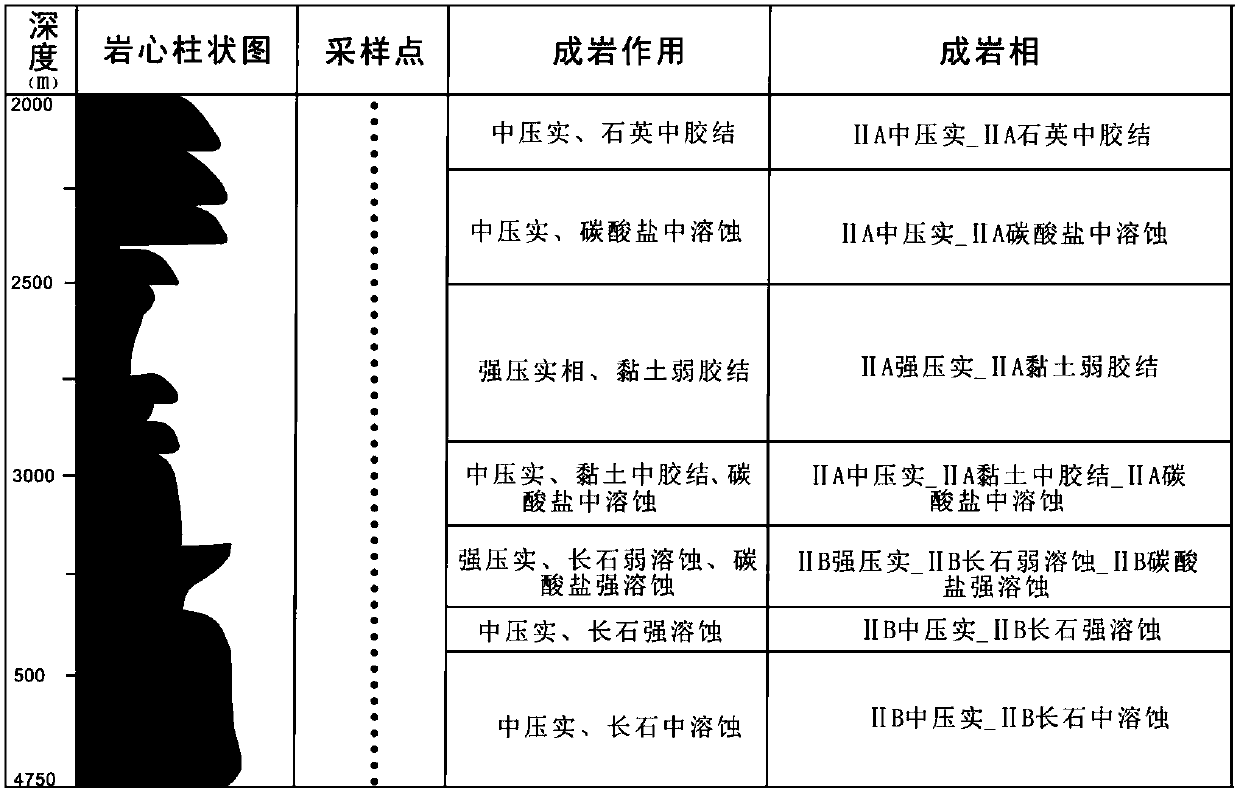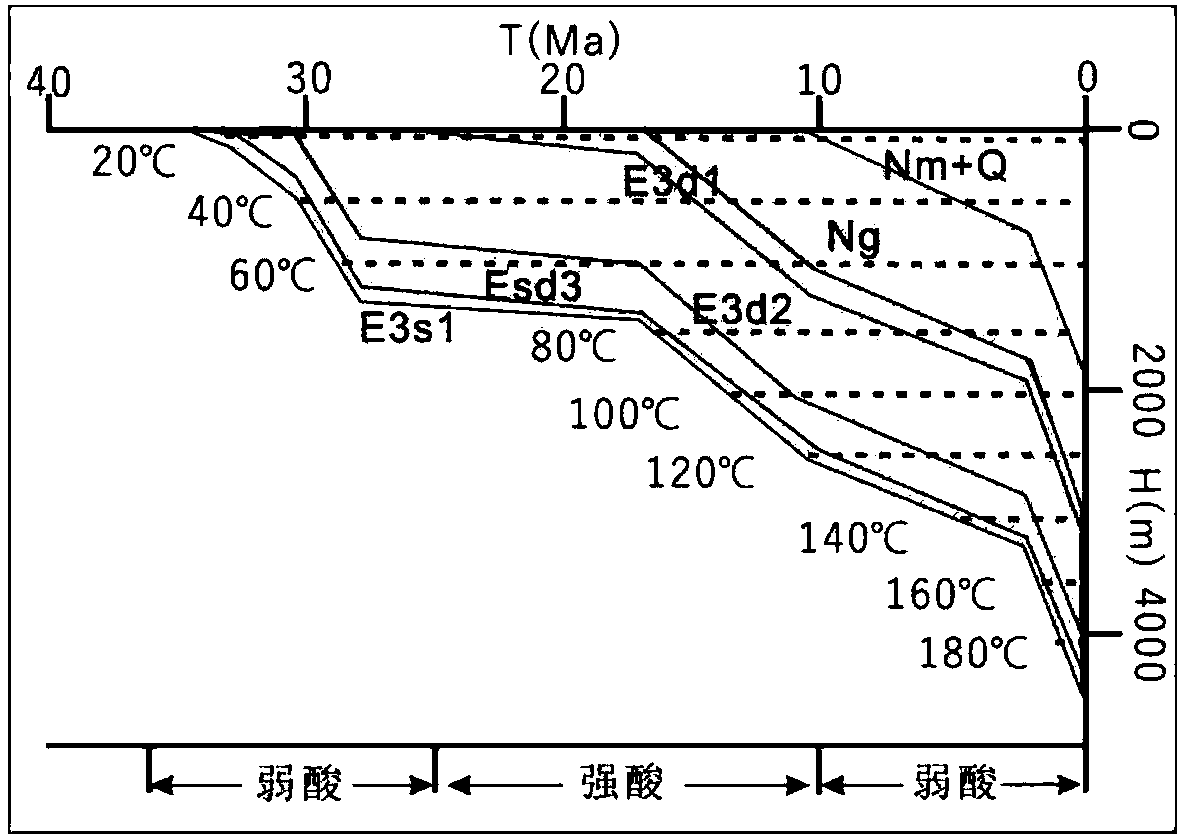Simulating calculation method for porosity of clastic rock reservoir on basis of diagenetic facies logging identification technology
A technology of simulation calculation and identification technology, which is applied in the direction of measuring device, geophysical measurement, suspension and porous material analysis, etc., and can solve problems such as reservoir porosity and permeability parameters that have not been further studied in diagenetic facies logging
- Summary
- Abstract
- Description
- Claims
- Application Information
AI Technical Summary
Problems solved by technology
Method used
Image
Examples
Embodiment 1
[0210] The method for simulating and calculating the porosity of clastic rock reservoirs based on diagenetic facies logging identification technology includes the following steps:
[0211] 1) Collect geological data in the study area
[0212] (1) Geological data of the research area, including core, mud logging information, thin section identification report, casting thin section data, inclusion analysis and test data, etc.;
[0213] (2) Well logging data in the study area, including borehole caliper (CAL), compensated neutron logging (CNL), density logging (DEN), deep / shallow lateral resistivity (RLLD / RLLS), natural gamma ray ( GR), natural gamma ray spectral logging (U, Th, K), acoustic time difference (AC) and photoelectric interface absorption index (PE) data;
[0214] (3) The burial history, thermal evolution history and fluid history of the study area.
[0215] 2) Establish diagenesis database
[0216] During the burial process, a diagenesis database was established a...
Embodiment 2
[0409] A method for simulating and calculating the porosity of Tertiary lacustrine clastic rock reservoirs in Bozhong Sag based on diagenetic facies logging identification technology,
[0410] The data of diagenetic facies are obtained by using the logging data in the study area, and then the parameters of each diagenesis model are determined according to the data of diagenesis type, intensity, burial depth history and geothermal history in the study area, and finally the porosity of the study area is simulated and calculated, the specific steps are as follows:
[0411] 1) Collect geological data in the study area
[0412] The collected geological data include the following:
[0413] ①Geological data of the research area, including core, mud logging information, thin section identification report, casting thin section data, etc.;
[0414] ② Well logging data in the study area, including borehole caliper (CAL), compensated neutron logging (CNL), density logging (DEN), deep / sha...
PUM
| Property | Measurement | Unit |
|---|---|---|
| density | aaaaa | aaaaa |
| gravity | aaaaa | aaaaa |
Abstract
Description
Claims
Application Information
 Login to View More
Login to View More - R&D
- Intellectual Property
- Life Sciences
- Materials
- Tech Scout
- Unparalleled Data Quality
- Higher Quality Content
- 60% Fewer Hallucinations
Browse by: Latest US Patents, China's latest patents, Technical Efficacy Thesaurus, Application Domain, Technology Topic, Popular Technical Reports.
© 2025 PatSnap. All rights reserved.Legal|Privacy policy|Modern Slavery Act Transparency Statement|Sitemap|About US| Contact US: help@patsnap.com



